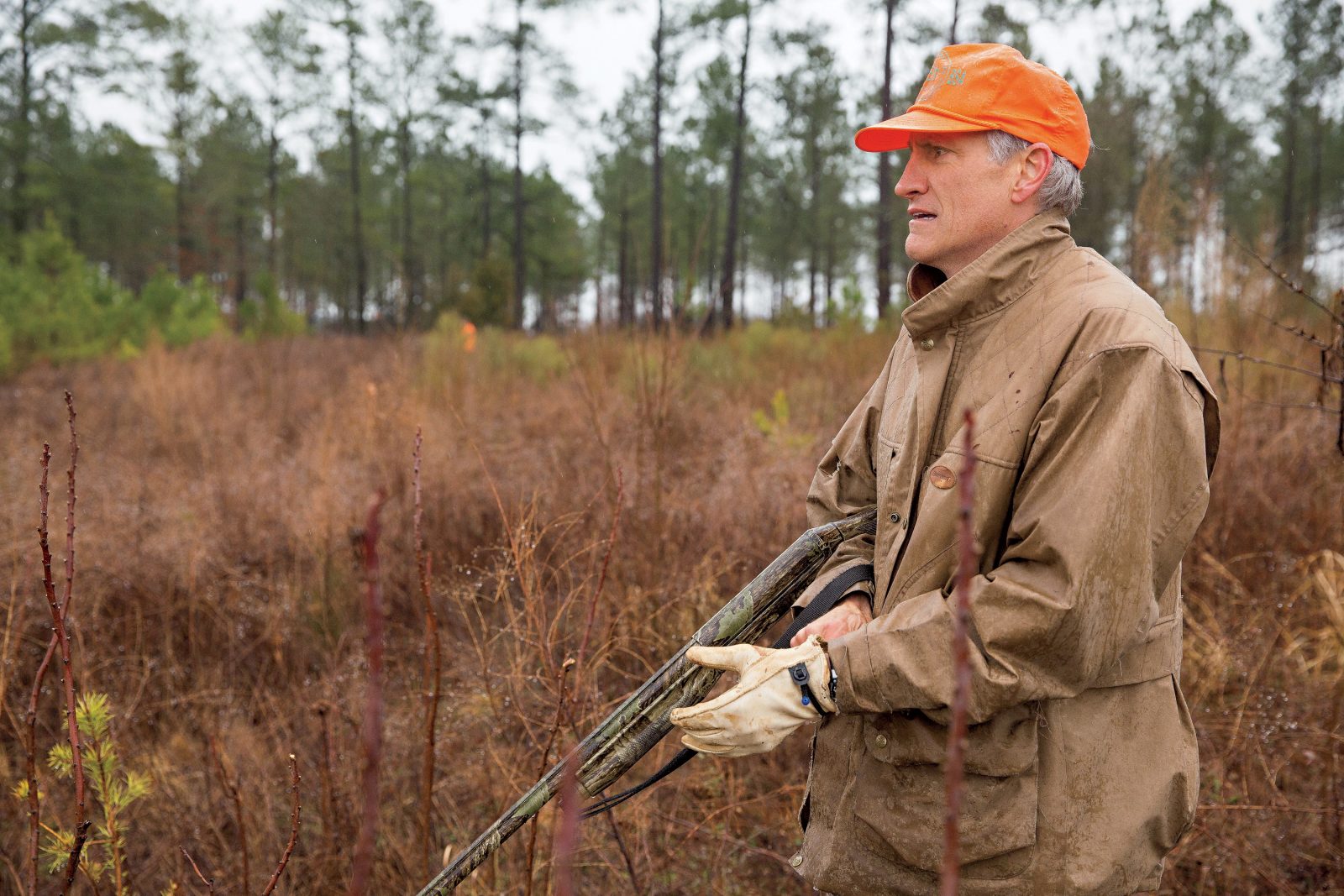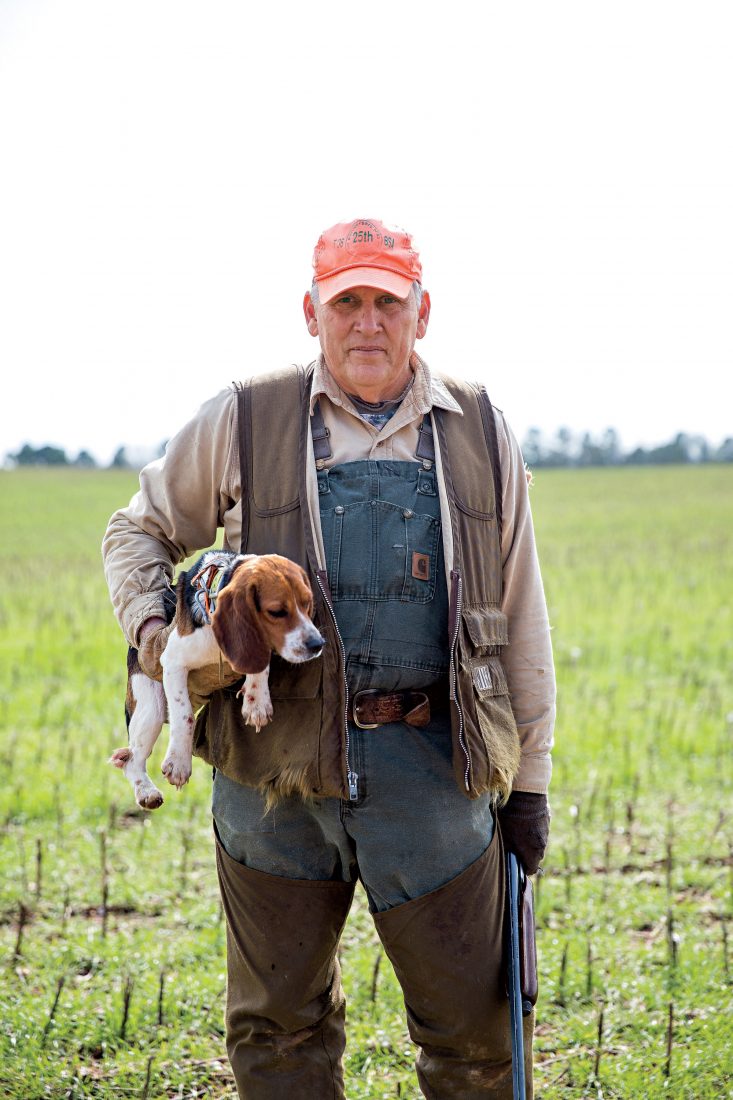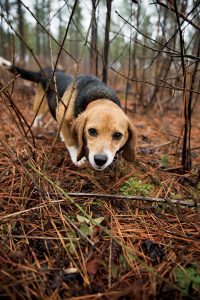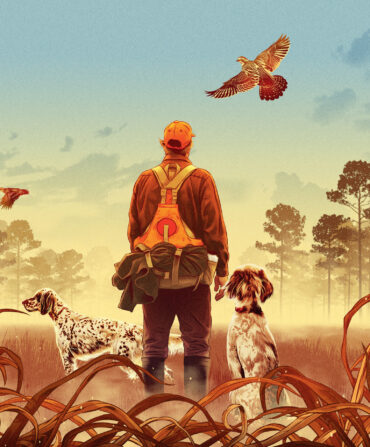Good Dogs
Heritage Hunt
Deep in the North Carolina Piedmont, one man has made sure that the storied tradition of taking to the field with a pack of beagles in mad pursuit of rabbits lives on

Photo: Peter Taylor
Megan will figure it out. She’s the one. A minute ago the rabbit pulled some rabbit trick as rabbits are wont to do—maybe it doubled back on its trail to confound the dogs, or jumped to the side, or ran a hollow log—but Megan went to work. When the pack loses the trail, she gears down, nose to the details. A good check dog will do that. Work a track that’s gone cold, or gone dry, or is just plain gone. The whole pack went silent when the trail vanished, but somewhere in the brambles that little beagle is doing her best to suck that track right out of the ground.
When she hits the scent, she opens up and they all know it, all the others in the pack, and in an instant they’re at it again, bedlam in the river bottom, an arioso chorus of bawling barks and yowls. Suddenly it’s like it once was in the North Carolina Piedmont, with frost in the fields and a rabbit on the run.
On John Bishop’s farm, near the forks of the Rocky and Pee Dee Rivers in Anson County, rabbit dogs still have the run of the place. Over the past fifteen years the fifty-one-year-old Concord businessman has pulled together 1,146 acres of rolling fields and hardwoods and river bottoms, and he’s managed it passionately for wildlife, and particularly for small game. The place is crazy with rabbits. Bishop knows of at least eight coveys of wild bobwhite quail on the farm. There are deer and wild turkeys. In the spring, migrating warblers throng the river bottoms. “We’re not about timber production,” Bishop says. “We grow row crops, and this is a working farm, but that’s not the point, either. We’re about diversity and wildlife. We work the land for habitat.”

Photo: Peter Taylor
John Bishop in the field.
Working the land is a passion he’s held since he was a child. Bishop’s grandfather was a town-and-country man, with one foot on either side of the city limits sign. During the week he ran a six-chair barbershop in Tryon, North Carolina, in the Appalachian foothills. It’s horse country now, but it was farm country then, rabbit country, too, and Bishop recalls many mornings spent with his grandfather, working mules hitched to harvest sleds, pulling potatoes and rhubarb out of the ground. His mother inherited the farm but sold it when Bishop was a child. “I’ve been passionate about land ever since,” Bishop says. “I knew I wanted my own piece of land, and I knew where I wanted it to be.” As a teenager, he took side roads and back roads driving back and forth from Kannapolis to the South Carolina beaches, through the corrugated corn and cotton and pine fields of the upper Piedmont. It’s where the Rocky and the Pee Dee meet and mingle. And it’s where Bishop staked a claim. He’s assembled five farms, and each acre is under conservation ownership. “This land will never be divided, never be developed, never leave the family,” he says. It will always be a place where the rabbits run.
And how they run. On Tuesdays, Thursdays, and Saturdays throughout the season, Bishop’s farm hosts a historic pack of beagles—descendants of the very same hound pack that led him on his first rabbit hunt when he was fourteen years old. Back then, his scoutmaster Don Efird ran the pack. Now Efird’s son, Lee, directs the beagles. They run across ridges where Whigs and Tories clashed in the Battle of Colson’s Mill, an American Revolution skirmish. They run along the river crossing used by Confederate troops. They run past farmhouses that date to the 1820s. They run thickets and ridges and fields of native grasses—big bluestem and Indian grass and partridge pea. The hunters aren’t far behind.

Photo: Peter Taylor
Lee Efird with one of his prized beagles.
“This is physical hunting,” Bishop says. “Walk through this cover and you’re worn out at the end of the day. But you have to use your brains, too. Know when to move. Know when to be quiet. Listen to the dogs and know who to believe.”
On a good day, four hunters might bag twenty rabbits. The dogs run as the frost melts in the cornstalks, run the wood’s edges and river bottoms, and when they run their best, nose to tail on a hot track, they run so tight, as the old-timers say, that you could throw a single blanket over the whole pack.
The dogs are that good. But so is this place, two square miles of one man’s lifelong dream. “This land is blessed,” Bishop says, “and I’m tickled to be a part of its history.”








